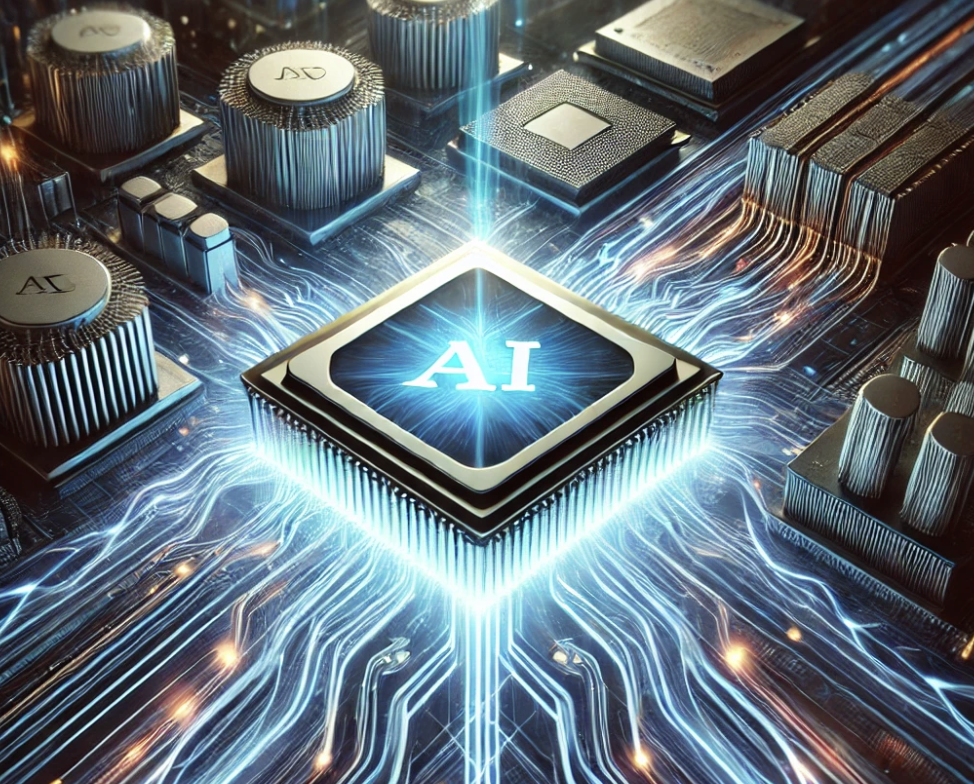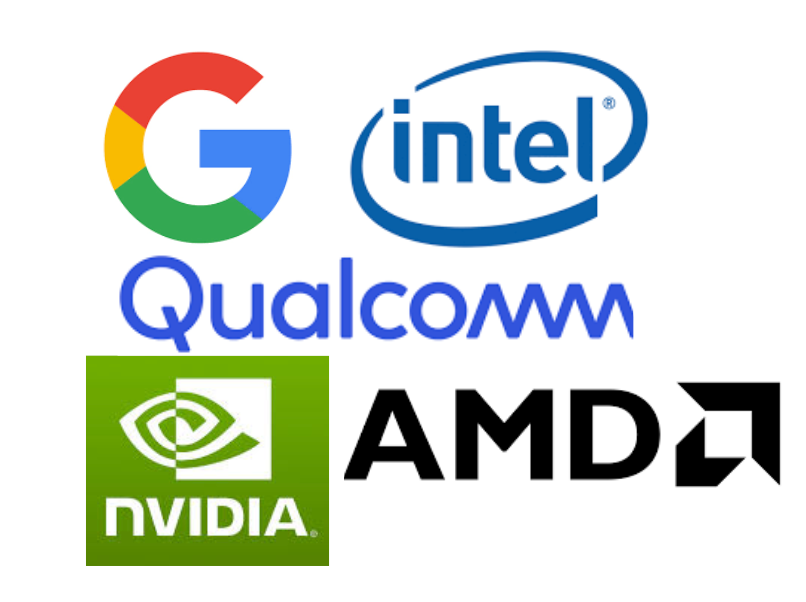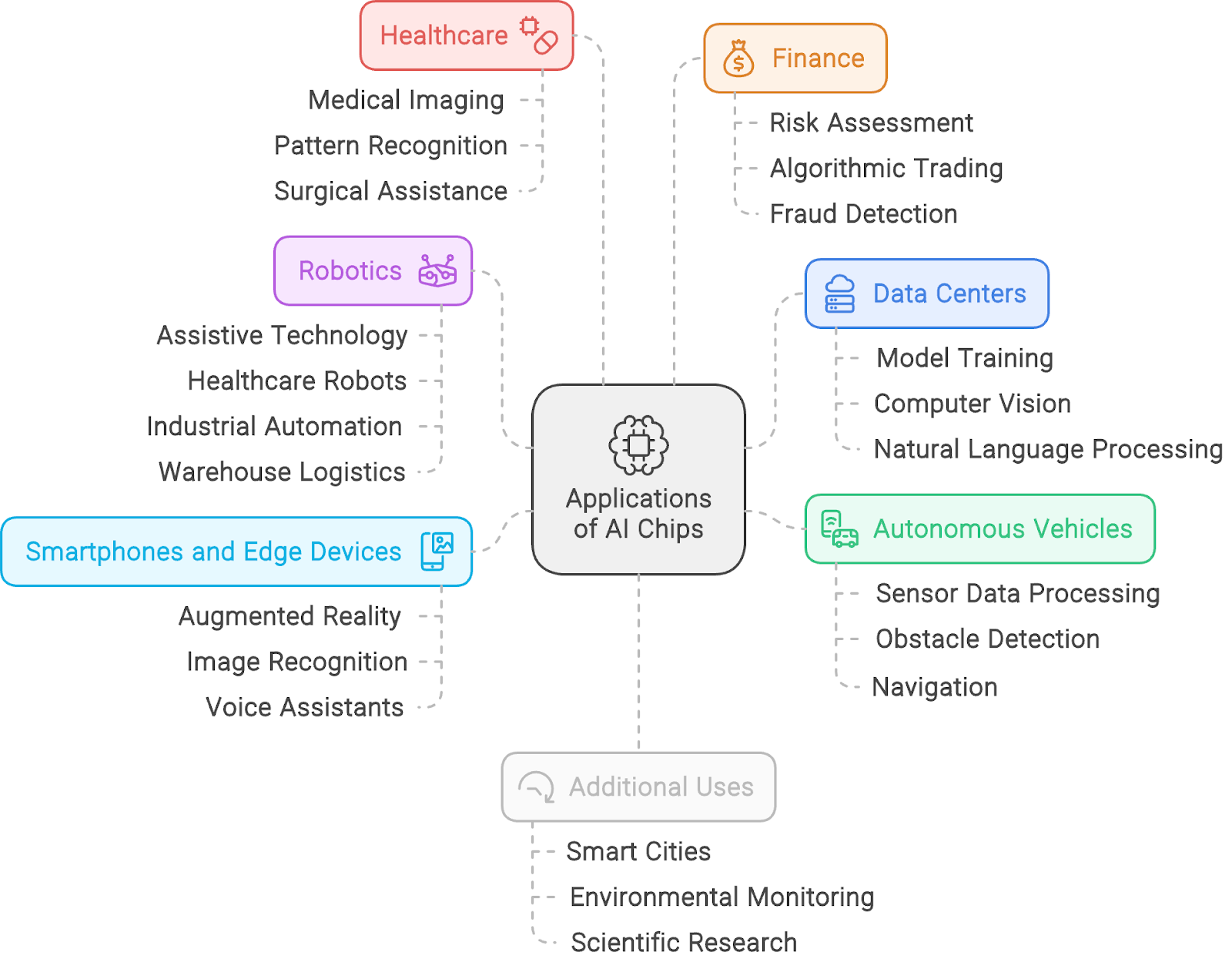Track
Complex AI algorithms require massively parallel computations and specialized operations, which put increasing pressure on traditional processors such as CPUs and GPUs.
Though versatile, general-purpose CPUs are not tailored to artificial intelligence computing needs. The sequential processing nature of these chips (where they execute one task at a time) doesn't suit the parallel nature of AI computations.
Not even GPUs, which were originally designed for graphics rendering, can adequately meet the demands of the specific mathematical operations and memory access patterns that are common in workloads related to artificial intelligence.
This is where AI chips come into play.
Designed specifically to accelerate artificial intelligence tasks, these specialized processors deliver significant improvements in performance, efficiency, and cost-effectiveness compared to general-purpose CPUs and GPUs. NPUs enable AI applications to achieve new levels of performance and fully utilize their capabilities through specialized hardware units and parallel computing.

What Are AI Chips?
AI chips: the very hearts of the AI revolution. To put it simply, they are specially designed processors that have been optimized to accelerate all operations related to artificial intelligence, with a particular focus on deep learning and machine learning. The complex mathematical computations and massively parallel computations involved in driving AI algorithms find an easy solution in these devices.
AI chips feed on processing very large amounts of data at a time—in contrast to regular CPUs, which work well on a narrow range of tasks and struggle to fulfill the unique demands needed for AI. This parallel processing power for specialized hardware components greatly quickens AI model training and inference which in turn allows instantaneous responses and opens opportunities for new applications as well.
Key features of AI chips
Several key features and technologies distinguish AI chips from their conventional counterparts, making them the ideal choice for AI workloads:
- Specialized processing units: The AI chips come with specialized processing units that are hardware units tailored explicitly for AI tasks such as neural network computations, matrix multiplication, and convolution operations. When these units are compared to general-purpose processors, we obtain large performance benefits because these crucial activities are accelerated significantly.
- Memory architectures: For AI workloads to meet fast data transmission, such mandates that the AI chips be endowed with high-bandwidth memory and effective memory access. Making sure the processing units are receiving data constantly helps in evading bottlenecks and maximizing throughput.
- Power efficiency: AI chips are well suited to be deployed in power-constrained environments, such as edge devices and mobile platform, because they incorporate various techniques to reduce power consumption and, hence, heat dissipation.
Master AI for Business
Learn how to extract business value from AI and LLMs.
How AI Chips Work
To understand how AI chips work, let’s explore in more detail their specialized architectures, parallel processing capabilities, key architectural components, software, and energy efficiency.
Specialized architectures for AI workloads
AI chips break away from the conventional von Neumann architecture, prevalent in CPUs, which relies on a sequential flow of instructions and data between the processor and memory. Instead, they adopt specialized designs optimized for the unique demands of AI tasks:
- Massive parallelism: AI models involve numerous computations that can be executed concurrently. AI chips exploit this parallelism through an abundance of processing cores that work in tandem, significantly accelerating AI operations.
- Matrix and tensor operations: Deep learning heavily relies on matrix and tensor operations, which AI chips are explicitly designed to handle efficiently. They incorporate dedicated hardware for these operations, accelerating fundamental AI computations.
Parallel processing
Parallel processing lies at the core of AI chip performance. Unlike CPUs, which execute instructions sequentially, AI chips perform multiple calculations simultaneously. This parallelism is crucial for AI's data-intensive and computationally heavy tasks, including:
- Training large models: Training deep learning models often involves processing massive datasets. Parallel processing allows AI chips to distribute the workload across numerous cores, reducing training time significantly.
- Real-time inference: AI chips leverage parallelism to provide real-time responses, crucial for applications like autonomous driving, speech recognition, and language translation.
Key architectural components
Several key components distinguish AI chips from their conventional counterparts:
- Specialized processing units:
- Tensor cores: Found in GPUs, tensor cores excel at accelerating tensor operations like matrix multiplication, crucial for deep learning algorithms.
- Neural processing units (NPUs): These specialized processors further refine the acceleration of neural network functions, making AI chips highly efficient for deep learning tasks.
- Systolic arrays: These unique hardware arrangements provide additional performance boosts for specific AI calculations.
- Memory hierarchy: AI workloads demand rapid access to large amounts of data. AI chips employ a multi-layered memory hierarchy:
- On-chip SRAM: Small but ultra-fast memory for immediate access to critical data.
- Off-chip DRAM: High-capacity memory for storing the bulk of the AI model and data.
- High-bandwidth memory (HBM): Specialized memory interfaces ensure rapid data transfer between the AI chip and external memory.
Software and optimization
While hardware is vital, software plays a crucial role in maximizing the potential of AI chips:
- Compilers and frameworks: Tools like TensorFlow and PyTorch translate AI code into machine instructions tailored for specific AI chip architectures. They optimize the utilization of the chip's resources, enhancing performance.
- Low-precision arithmetic: AI chips often use lower-precision formats, such as 8-bit or 16-bit numbers, instead of the traditional 32-bit floating-point format. This accelerates calculations, reduces power consumption, and often yields sufficient accuracy for AI tasks.
- Quantization and pruning: Techniques like quantization and pruning reduce the size and complexity of AI models, making them more efficient for deployment on AI chips with limited resources.
Energy efficiency
The increasing power demands of AI applications have brought energy efficiency to the forefront:
- Optimized power consumption: AI chips incorporate power management features, clock gating, and specialized circuit designs to reduce energy usage and heat dissipation.
- Edge AI: AI on resource-constrained edge devices, such as smartphones and IoT devices, demands energy-efficient solutions. AI chips optimized for low power consumption are critical for extending battery life and enabling a wide range of edge AI applications.
The AI Chip Landscape: Key Players and Trends
The AI chip landscape is a competitive and fast-paced environment. Established tech companies and emerging startups are all vying for a share of this emerging market.
Key Players
The AI chip market is full of innovation, with several major players leading the charge:
- NVIDIA: A dominant player in the GPU market, NVIDIA has expanded its focus to AI chips with its Tensor Core GPUs and specialized AI platforms like the Jetson series.
- Intel: Intel offers a range of AI solutions, including its Nervana Neural Network Processors (NNPs) and Movidius Vision Processing Units (VPUs).
- Google: Google has developed its custom-designed AI chips, the Tensor Processing Units (TPUs), which power its AI services and research.
- AMD: AMD offers Radeon Instinct GPUs with dedicated AI acceleration capabilities, targeting data center and cloud AI workloads.
- Qualcomm: Qualcomm's AI solutions include its Snapdragon platforms with integrated AI engines, powering AI capabilities in smartphones and other mobile devices.

Beyond the established players, numerous startups and research organizations are actively involved in developing innovative AI chip architectures. These entities bring fresh perspectives and disruptive ideas to the market, contributing to the diversity and dynamism of the AI chip ecosystem.
Market trends in AI Chips
Several key trends are shaping the AI chip market:
- Increasing demand for specialized AI chips: As AI models get more complicated, there is a rising need for specific AI processors that can handle these workloads effectively.
- The emergence of edge artificial intelligence: The demand for power-efficient AI chips made for edge deployment is being driven by the growth of edge devices and the requirement for real-time AI processing at the edge.
- Escalating curiosity around open-source AI processor architectures: Initiatives encouraging cooperation and creativity in AI hardware development are contributing to the growing popularity of the open-source movement in the AI chip market.

AI Chips market size prediction. Source: Precedence Research
Applications of AI Chips: From Data Centers to Edge Devices
AI chips find applications across a wide range of domains, transforming industries and enhancing our daily lives:
- Data centers: AI chips facilitate extensive AI model training in data centers, leading to advancements in computer vision, natural language processing, and other related domains. They are the driving forces behind the creation of highly developed AI models that can recognize objects and scenes with astounding precision, interpret and produce language akin to that of a person, and even produce unique material.
- Autonomous vehicles: Artificial intelligence (AI) chips allow self-driving cars to perceive, make decisions, and take control in real time, opening the door to safer and more effective transportation. By processing sensor data from cameras, lidar, and radar, they enable self-driving cars to detect impediments, navigate intricate settings, and make snap judgments that protect the safety of their occupants.
- Robotics: AI chips are the brains underlying sophisticated robotics applications, ranging from assistive technology and healthcare robots to industrial automation and warehouse logistics. They provide robots the ability to sense their environment, gain experience, and accurately and deftly carry out difficult jobs.
- Smartphones and edge devices: AI chips are incorporated into commonplace gadgets, enabling AI features like augmented reality, picture recognition, and voice assistants right in your hand. They enable our smartphones to be more secure and private while understanding our commands, identifying faces, and enhancing our photographs.
- Healthcare: AI chips are revolutionizing the sector by making individualized treatment plans, drug development, and quicker and more accurate medical diagnostics possible. They can analyze medical images, identify patterns in patient data, and assist in surgical procedures, leading to improved patient outcomes and more efficient healthcare delivery.
- Finance: AI chips are transforming the financial sector by providing previously unattainable speed and precision for risk assessment, algorithmic trading, and fraud detection. Their ability to evaluate enormous volumes of financial data, spot irregularities, and forecast outcomes enables financial organizations to reduce risks and make well-informed decisions.
- Additional uses: AI chips have a plethora of possible uses that are only going to grow. AI chips have the potential to significantly influence how technology and innovation are developed in the future, from smart cities and homes to environmental monitoring and scientific study.

Image generated with Napkin
Conclusion
AI chips are central to the ongoing AI revolution. Their specialized architectures and efficiency drive advancements across various industries. As AI's importance grows, AI chip technology will continue to evolve, impacting how we live and work. However, realizing AI's full potential will require continuous innovation and addressing challenges like energy consumption and ethical considerations.
Earn a Top AI Certification
Senior GenAI Engineer and Content Creator who has garnered 20 million views by sharing knowledge on GenAI and data science.

